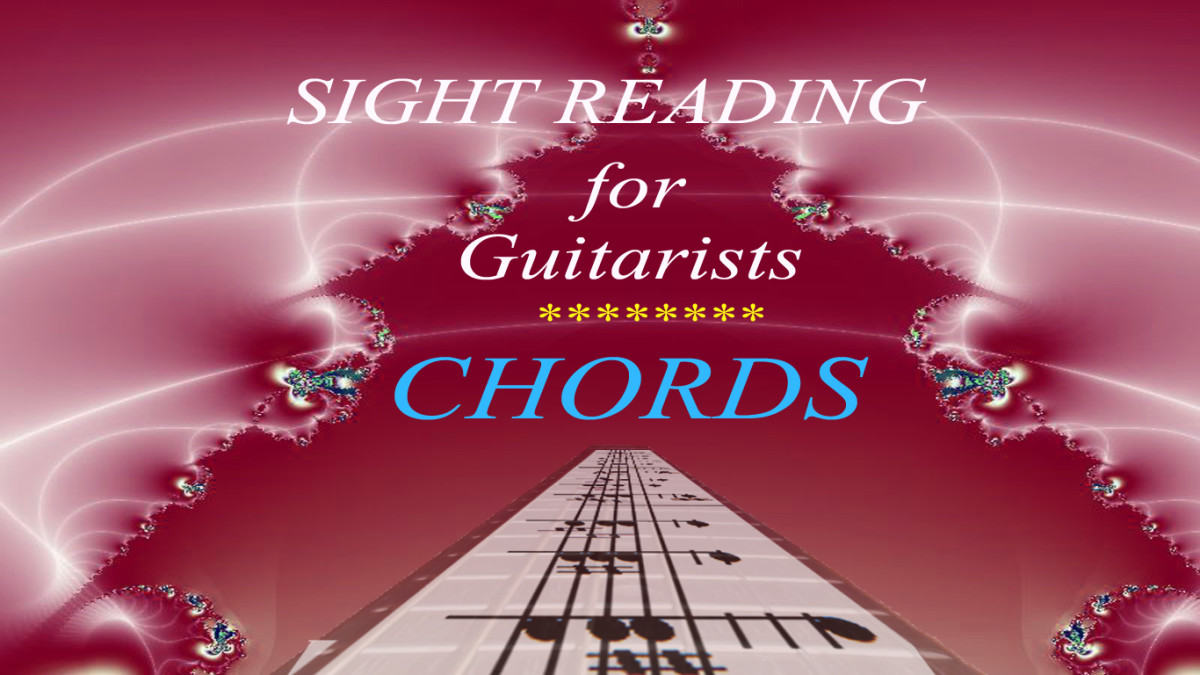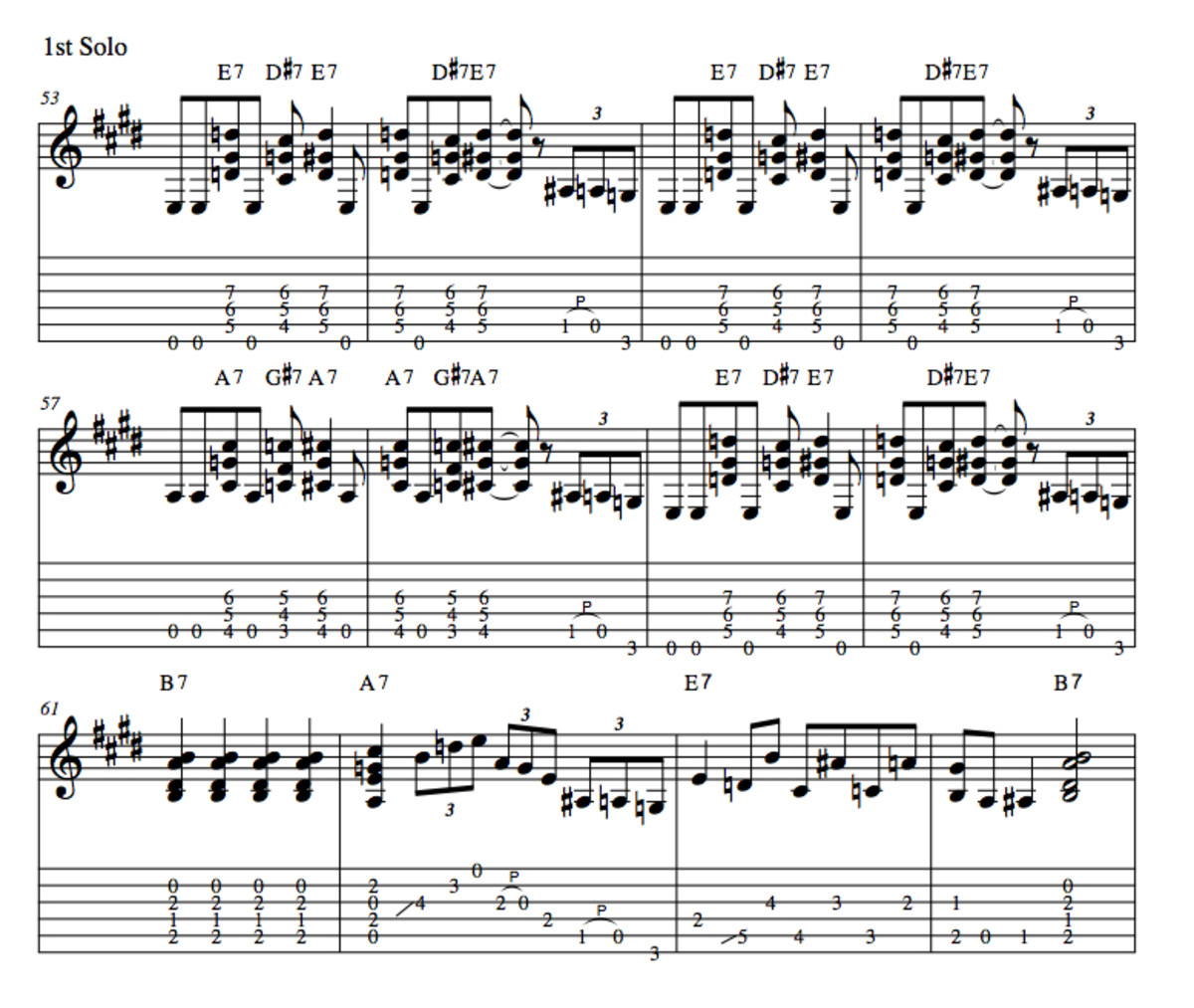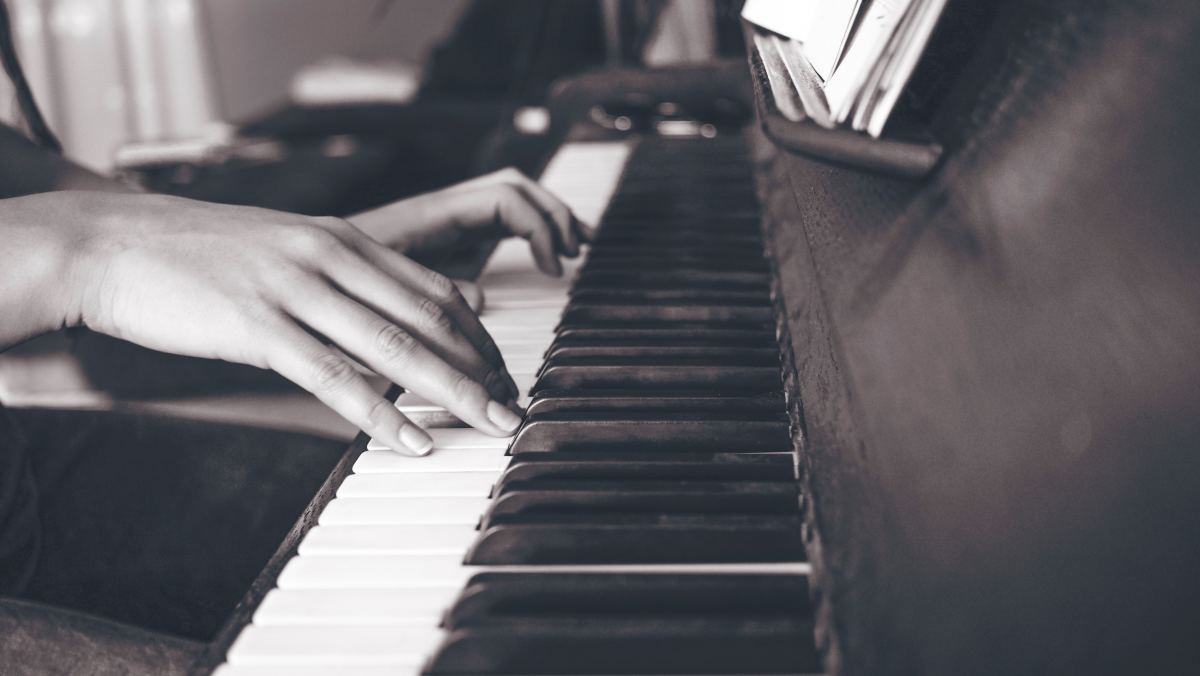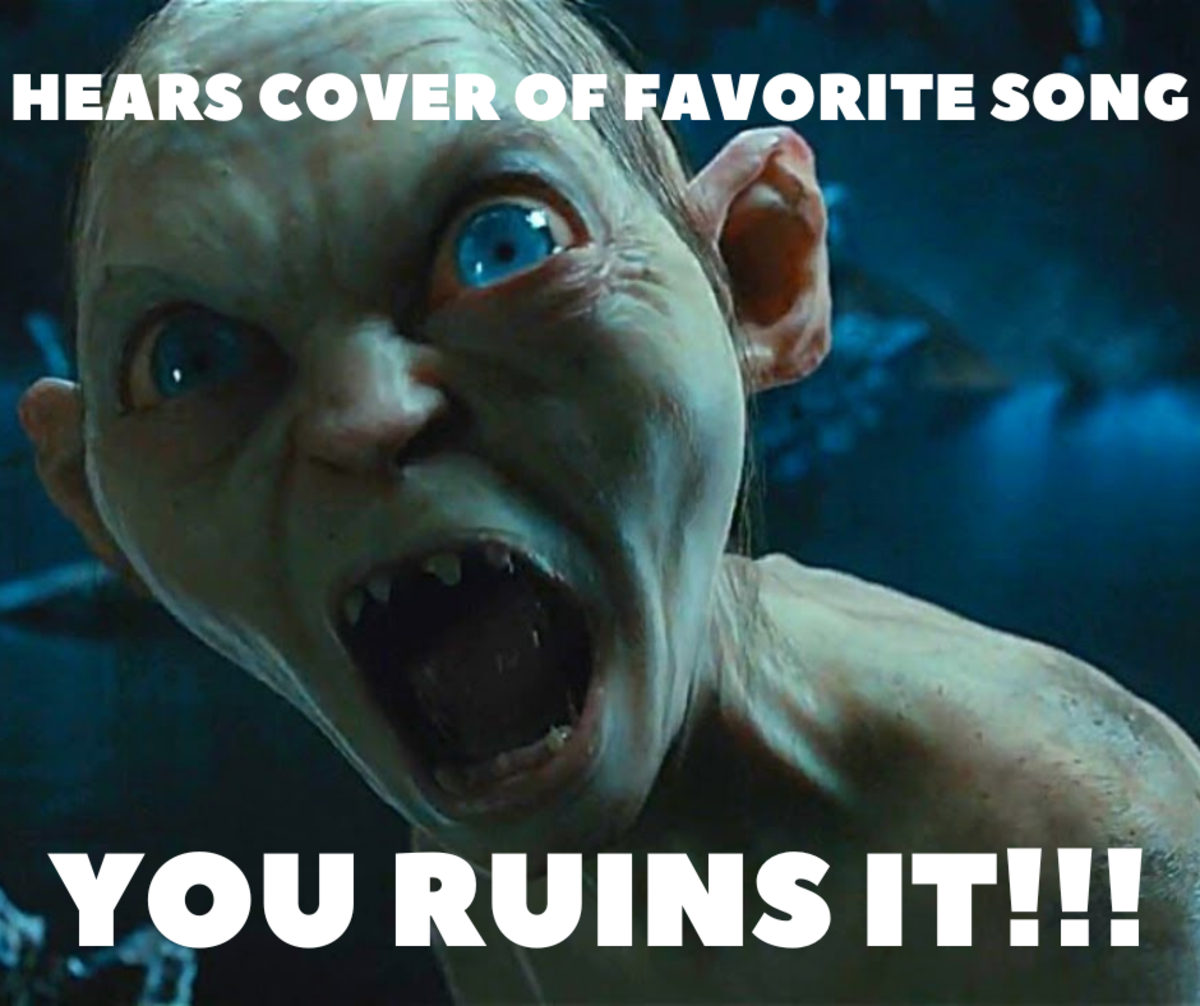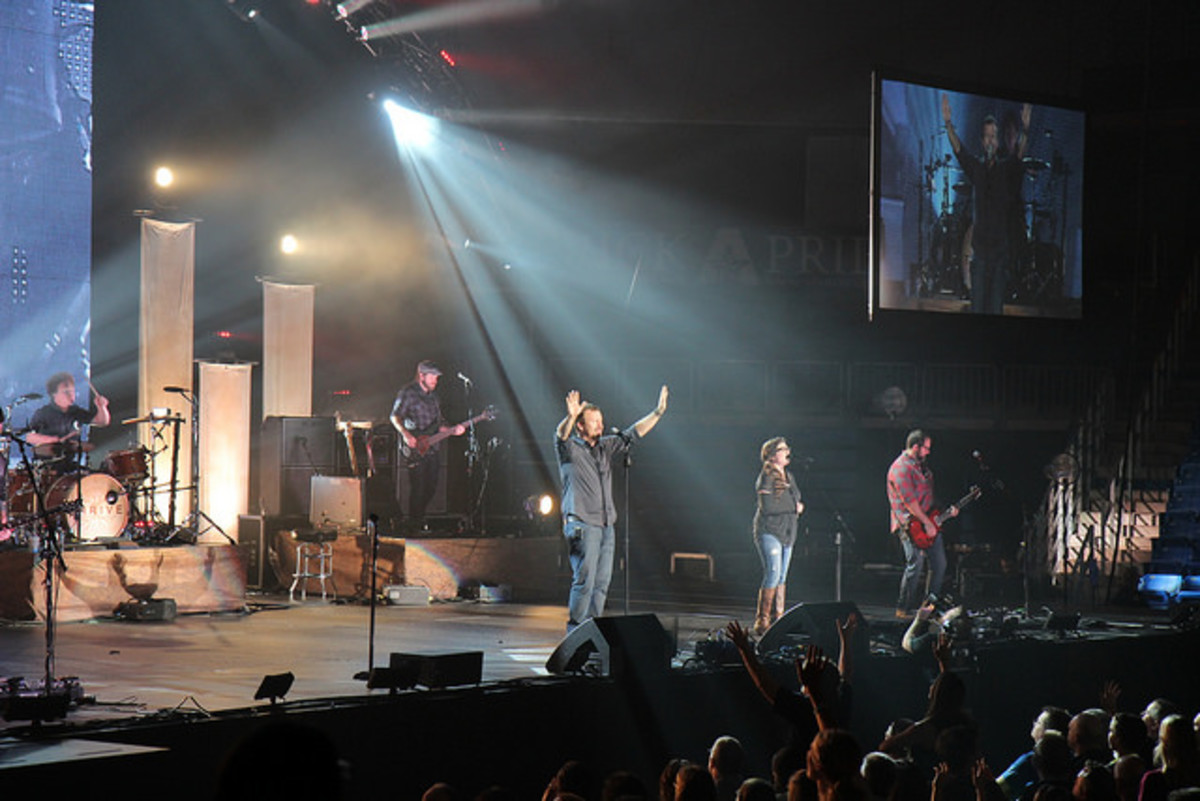How To Play Guitar For Beginners - Your Easy Introduction To Becoming A Guitar God.
Guitar Lessons Online
There has never been a better time to learn how to play the guitar in the entire history of mankind. Never. Ever.
Why? You have thousands of free tuition videos on YouTube. You have instructional DVDs and online courses for whatever style you play. There are books aimed at idiots, which is handy if you happen to be one. You have the world's best guitarists lining up around the block to teach you all they know, probably because CD sales have slumped and their income streams may be looking iffy*. So take advantage of the fact, dive in, and find some guitar lessons online.
* Q. What's the difference between a large pizza and a guitarist?
A. A large pizza can feed a family. (Guitarist joke. As told by drummers.)
Guitar Lesson
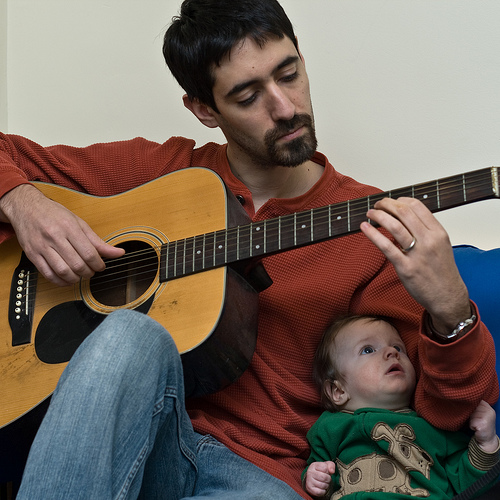
New Guitar
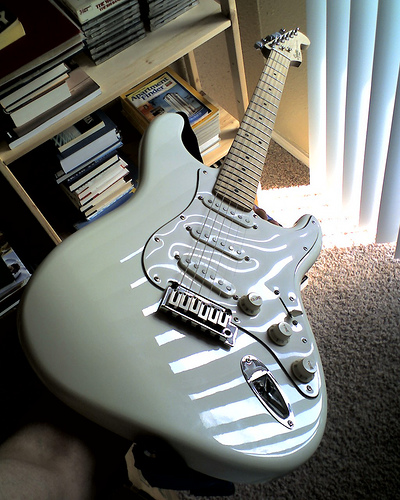
How To Tune Your Guitar
First of all, do you have an instrument yet? If you haven't got a guitar, read this how to buy a guitar hub I wrote. If you have a guitar, the first thing you should do is learn how to tune it. You can have the best guitar in the world, but if it's out of tune it'll sound awful and there's no way you can play it properly. Stick to the standard EADGBE tuning to start with. Yes, it's the same tuning everyone uses, and you desperately want to be different - but here at the start of things, it's best to keep things simple and easy. You will, at some point, try every different tuning out there - it's like a sickness among guitarists - but you'll always come back to standard tuning. Because it works.
Use an electronic tuner if you have one, because they really do make life easy. Or use a tuning fork if you don't. No tuning fork? There are guitar websites that have a tuning page with audio. Check the links for details. As a last resort, use another instrument.
Here's how you tune your guitar from a piano: The E String - the bass E, the thickest, and lowest sounding string, the one closest to your face when you're playing, is known as the 6th string.
Tune the bottom E. If you have a piano, tune the low E guitar string to the 2nd E below middle C. Turn the tuning peg on the guitar headstock until the notes match.
The A String - is the 5th. Hold down the fifth fret on the bottom E string for an A . Tune the fifth string until the two notes are the same.
The D String - is the 4th. Hold down the fifth fret on the A string for a D. Tune the fourth string until the two notes are the same.
The G String - is the 3rd. Hold down the fifth fret on the D string for a G . Tune the third string until the two notes are the same.
The B String - is the 2nd. Hold down the fourth fret on the G string for a B. Tune the second string until the two notes are the same. Note that this is the only exception to the fifth fret rule.
The E String - the thinnest, is the 1st. Hold down the fifth fret on the B string for an E . Tune the first string until the two notes are the same. You can also tune with the harmonics at the fifth and seventh frets - but I'm not going to get into that here. Google it if you're curious.
Beginner Guitar Tuning - How to Tune Your Guitar Lessons!
Boss Chromatic Tuner TU2
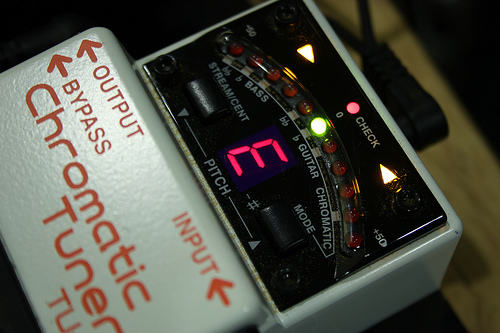
Large Pizza. Not A Guitarist.

Guitar Chords For Beginners
Where do you start to learn how to play the guitar? With the simple open chord shapes. Start with C, A, G, E and D major chords down at the bottom of the neck. Why? Because when you know these five shapes, you can move them to play almost every chord you'll ever need and learn your way around the guitar neck, using the CAGED system.
Each kind of chord - whether major, minor, dominant seventh or diminished - has a recipe. A major chord, for example, consists of just three notes from the scale it's named after: the root, third, and fifth notes from the scale. A minor chord takes those notes and flattens the third by a semitone, while a diminished chord flattens both the third and the fifth.
When you know these chord recipes, and can name any note on the fretboard, you can build a chord anywhere on the fretboard. Where can you find these recipes and a map of the fretboard? Well, keep it under your hat, but there's this weird little website called Google. It's kind of a trade secret.
Don't worry about that yet. Learn those five major chords, and their minor variations. See the difference between A and Am? It's one note moved one fret down. That's called a flattened 3rd. Same with E and Em, and D and Dm.
Finally, learn these chords: C7, A7, G7, E7 and D7. And also B7.
And that's 16 chords - enough work there for a whole month of practice for any beginner learning their first guitar chords. Don't think you have to get all this under your belt in one night. It's better to get into the habit of regular practice every day, even if you can only spare a few minutes. Ten minutes of concentrated guitar practice every day is better than a two hour torture session when you happen to feel like it.
Top tip: make it your mission to learn one chord shape per day. Study the chord charts, learn your one shape and get it lodged firmly in your head and hands. Then move on to the next, and practice swapping between them.
Open C chord
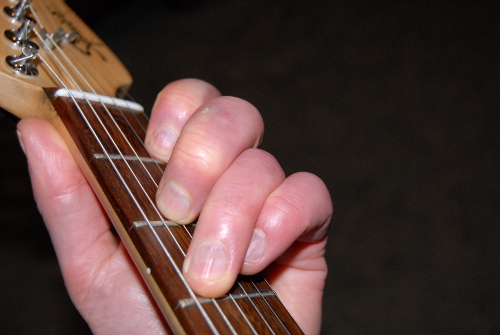
Guitar For Beginners- Is It Hard?
Beginners can struggle with the guitar because they try to do too much too soon. You didn't learn how to walk and talk overnight, and it'll take you a while to get anywhere on guitar too. Expertise on the guitar begins with the simplest building blocks. Start with the chord shapes. Memorize a handful, then practice changing smoothly from one shape to another, until you can do it fluently and quickly, with all the notes sounding.
Playing the guitar depends on muscle memory and developing the dexterity in your hands. Only regular, targeted practice can help you do that.
Is it difficult? At first, yes. Anything worth doing takes time and effort, and playing the guitar is no exception. But if you keep to this rule - ten minutes every day of focused effort - you will make swift progress.
Open A chord
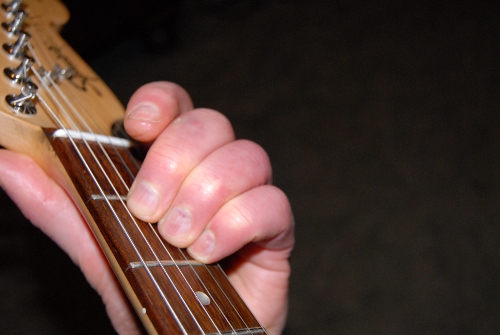
How To Play Guitar? Learn One Chord.
Learn one chord. Get it fixed in your head and hands, then learn the next chord. Then change from the first chord to the second chord and back again until you can do it without thinking, instantly and smoothly. That's what practice is for - through repetition, it turns a movement you have to concentrate on into something you could do in your sleep. It makes the hard parts easy, in time.
I can't stress enough that knowing the chords is no substitute for being able to play them. Playing an instrument is a hands-on business. Your knowledge must be applied, and that only comes with regular practice.
It's important to set goals and have a clear notion of what you're trying to achieve, just so you can measure your progress and actually get somewhere. To this end it might be a good idea to pick some songs or pieces you want to play on guitar. Find out what you have to learn, and organize your practice accordingly.
Open G chord
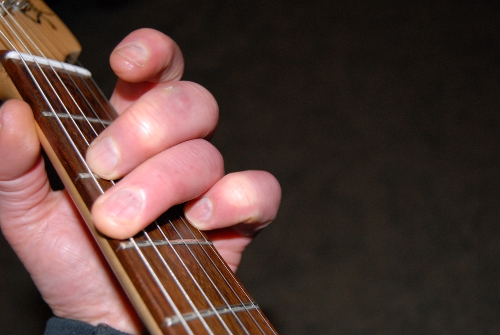
How To Play Electric Guitar For Beginners
Pretty much the same way you'd play an acoustic, except plugged into an amplifier. The same rules apply: make sure all the notes of your chords sound, and use a metronome to keep time.
Stay away from effects pedals to begin with. They can flatter your playing and make you sound better than you are - which is not a good thing when you're trying to learn how to get good on guitar. Stick to a clean tone, with no distortion or delay, so muffed notes stick out and don't get lost in the noise. You can't fix a mistake until you can spot it.
Should you learn how to read music? Yes, if you can find good tuition. Guitarists can get by with chord symbols and TAB, but it always helps to be able to communicate with other musicians using the language they all know - written music scores.
Open E chord
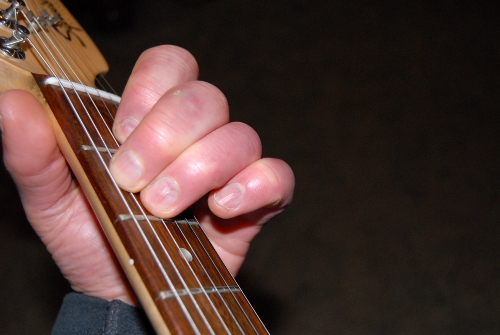
Easy Songs To Play On Guitar For Beginners
Most pop music is pretty simple. Each song probably has three chords, maybe four*, and you modulate up one tone towards the end so it doesn't get too boring. Which is good news if you're learning to play guitar.
When you have your handful of chords under your fingers, try listening to pop music on the radio and see if you can play along. It's good training, and helps develop your ear. Ask yourself these questions while you're listening: is this song in a major or minor key? What key is it? Play some notes, see what sounds right. Where does the chord change come? What chord does it go to at that point? Is that a major chord or a minor chord, a seventh, or one of those weird sounding jobs I haven't studied yet? Is there a riff that keeps repeating? Can I figure out how to play it?
Over time you'll hear the patterns emerge, and be better able to predict the chords used and the turn the tune will take. It all helps you become a better player.
* Which chords? Usually root, 4th, 5th, and relative minor. In the key of C, these would be C, F, G, and Am. Then modulate to D by shoving everything two frets further up the neck for the last verse. Result? Chart hit.
Congratulations! You just learned the three chord trick, which means you are now a fully qualified guitar god. Go forth and boogie. Seriously, most major chart hits depend entirely on those four chords - root, 4th, 5th, and relative minor. Don't believe me? Then watch this:
Axis of Awesome - 4 Four Chord Song (with song titles)
Open D chord
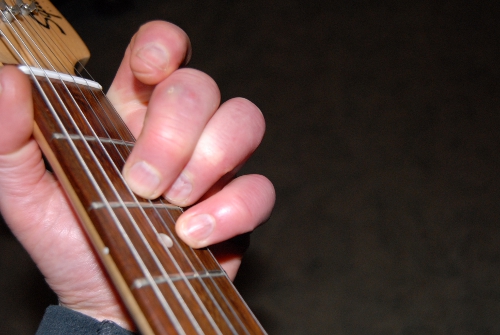
Music Theory For Guitarists. Yes, You Need It.
I've only recently dived into music theory - and I wish I'd started years ago. Guitarists can pick up a lot by ear, but it's like a writer learning how to write by listening to speech, instead of learning grammar. Is that a confusing metaphor? Let me put it this way: the more you know about music theory, scales, modes, time signatures and everything else, the more choices you have when it comes to what you play. And the more rich and profound your music will be. Study will make you a much better player.
At the same time, don't neglect playing by ear. Listen to a lot of guitarists, choose the ones you love to listen to, and try to break down what they do so you can learn how to do it. Music theory will help here too, as it will explain the choices they made and help you work out how to copy them.
A minor chord
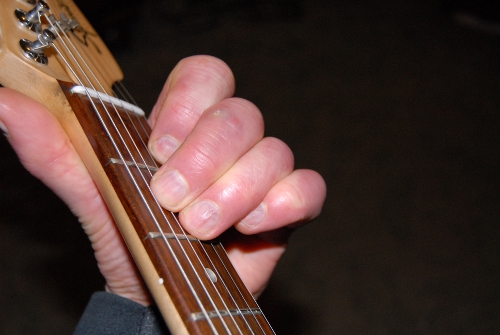
Guitar Scales - Learn Them And Become A Guitar God.
The guitar starts off as one of the simplest instruments to learn - and then it gets complicated. But if you remember to chunk everything down, and learn a little at a time, you can't fail.
Learn the scale of C major. All the different ways of playing it, all over the neck. Practise playing it with a metronome (you can find one online if you don't feel like shelling out for one - check the links below) at a slow speed until you're confident enough to increase the speed a little. This will start you on your way to playing solo guitar.
The major scale contains most of the other scales you'll ever need to know. The Ionian scale, as the major scale is called, contains the Dorian, Phrygian, Lydian, Mixolydian, Aeolian and Locrian modes, which you can learn all about in my hub about the modes for guitar. Don't get scared off by the technical sounding names. They're just more scales you can use. Learn them to add colour to your playing.
E minor chord
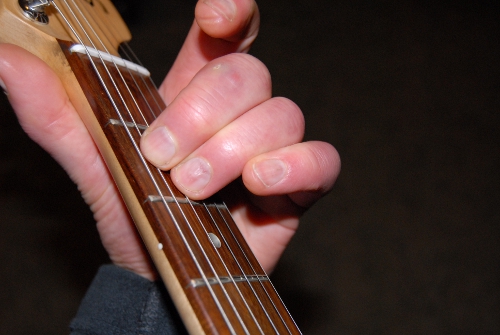
How To Play Guitar For Beginners - Summary
- 1 - Get a good instrument. Trying to learn on a bad guitar is an uphill struggle. At the very least, it has to be tunable, stay in tune, and be easy to play, with a pleasant tone. Make sure it has a truss rod in the neck so you can adjust the action if it's too high or too low.
- 2 - Get good instruction. It's everywhere - free, on YouTube, or in books you can get from your library. Do a search on Amazon to find more books. Then order them from your library. Don't buy one until you're sure it'll help.
- 3 - Learn how to tune your guitar. Then learn ONE chord. Just one chord. Get it in your head and under your fingers. Play it so every note sounds clear.
- 4 - Learn another chord. Learn to change from the first chord to the second chord. Do it until you can do it smoothly, quickly, and easily, with no flubbed notes or hesitation. This will be the hardest you ever have to work when it comes to learning guitar. Seriously, this is as hard as it gets, right here at the start. If you can tough this out, it can only get easier.
- 5 - Get good tuition. Pay someone to teach you, and pay attention to what they tell you.
- 6 - Learn your first piece - a song, a tune. Make it something you like, and make it something simple, or you'll struggle.
- 7 - Keep setting attainable goals, and practice every day for a minimum of ten minutes focused practice.
And that's how to play guitar for beginners. If you take it seriously and devote time and effort to a clear goal, you can learn how to play the guitar. It's a lifelong study, and a lifelong pleasure too.
Guitar Links
- Hooktheory - Music theory, songwriting software, and popular song analyses.
Ever wonder how to write a song? This site will help you a lot. - Guitar Tuner @ HowToTuneAGuitar.org
No electronic tuner? No tuning fork? No piano? Just point your browser here to tune your guitar. - http://www.monarchknights.com/teacherwebpages/halladay/documents/BasicMusicTheory1ed_000.pdf
Music theory? Start here. - Web Metronome .com - a free online metronome
Web Metronome is the simplest, most up-to-date and flexible Metronome for the Web, iOS, PC, or Mac. - METRONOME ONLINE - free!
Free metronome. What more could any man wish? - Guitar - gear, reviews, lessons, and discussion
Reddits guitar Q&A. Useful and interesting.

